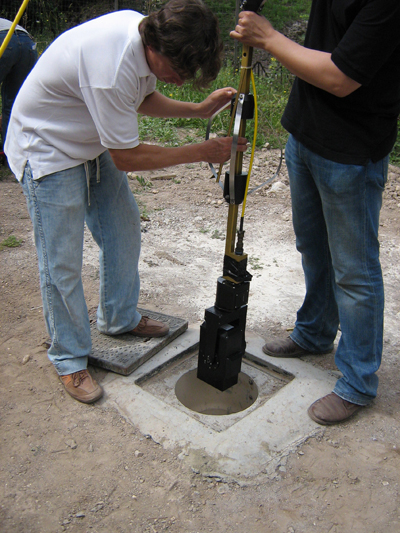Yesterday Italy’s Minister of National Heritage and Culture, Francesco Rutelli, unveiled a remarkable archaeological find. Several months ago, working to restore the palace of Emperor Augustus on Rome’s Palatine Hill, archaeologists discovered a cave they now believe is Lupercale – the place where, according to legend, a she-wolf suckled Romulus and Remus, Rome’s twin founders. To begin investigating their fragile find, the archaeological team from the Rome Municipality’s Cultural Heritage Department engaged Codevintec Italiana srl, Milan, which lowered an Optech CMS (Cavity Monitoring System) into the chamber and scanned the interior.
The scans revealed a cavern 6m 56cm wide by 7m 13cm high. The data showed that much of the cavity is filled with earth and debris from a partial collapse; investigators are still searching for the entrance. Use of the cavity scanner instead of Codevintec’s ILRIS-3D terrestrial laser scanner was dictated by the obvious access restrictions – the need was maximum information about the cave’s interior with minimum disturbance of the site.
Subsequent photography through the borehole showed a chamber encrusted with mosaics and seashells – the lavish decoration is one thing that convinced investigators this was not part of a private residence. Another was its location on the Palatine Hill near the palace of Augustus, known to have wanted his residence situated at a place sacred to the city of Rome.
According to myth, Romulus and Remus were twin sons of the god Mars. Abandoned as infants beside the river Tiber, they were found and nursed by a wolf in the Lupercale cave, legend has it, and subsequently founded Rome at the site of the Palatine on April 21, 753 B.C. The cave is known to have been a place of worship for the pagan cult of the Lupercale, which continued until it was banned in the fifth century by Pope Gelasius I.
We understand that, in the interest of preserving the site, the Codevintec team and others involved in the work were sworn to secrecy about their findings by the Culture and Heritage Ministry until yesterday’s dramatic press conference by minister Rutelli.






